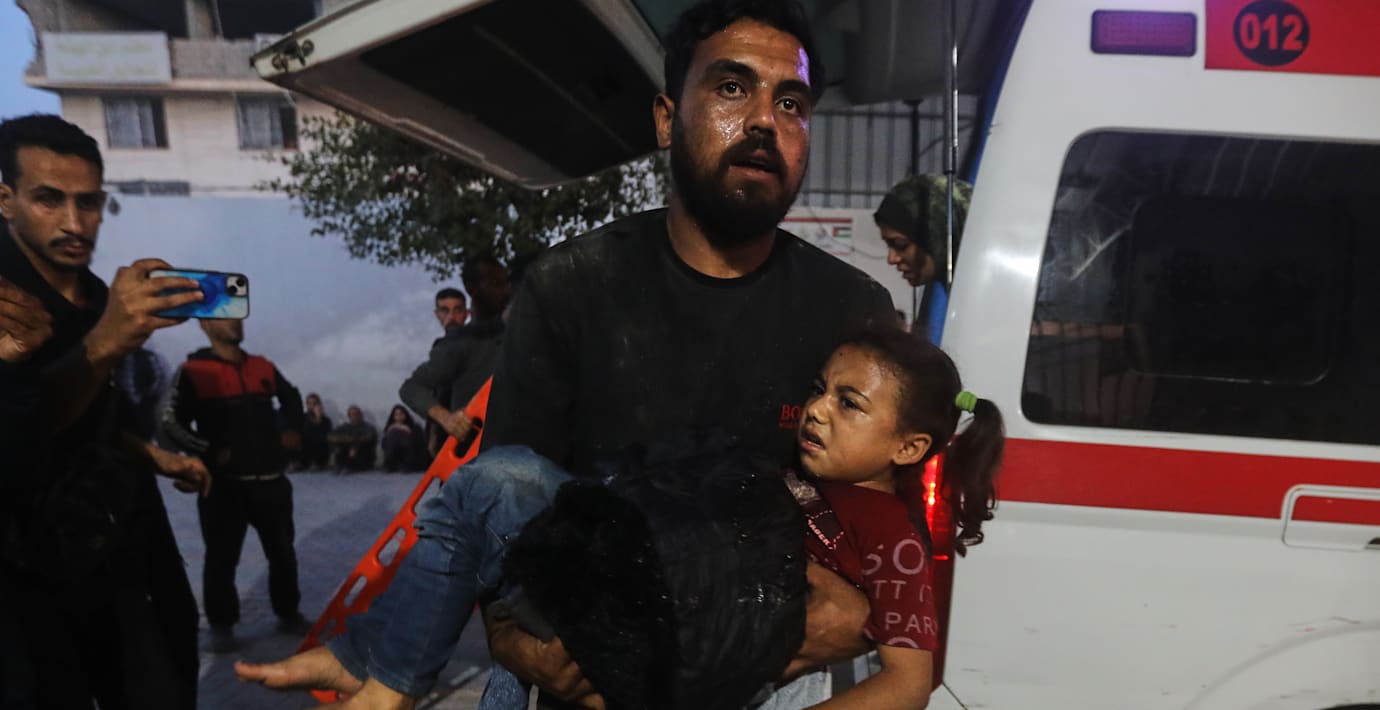
Samtal pågår i Kairo om vapenvilans andra fas
Medlarländerna har samlats i Kairo för att diskutera planerna för vapenvilans andra fas i Gaza. Det rapporterar egyptiska statsmedier, enligt Reuters. Delegationerna från Egypten, Qatar och Turkiet kom överens om att fortsätta förhandlingarna i samarbete med USA, enligt uppgifterna.
Nästa fas i vapenvilan handlar om att skapa ett övergångsstyre och sätta in en internationell stabiliseringsstyrka i Gaza – och att avväpna Hamas, en väntad knäckfråga i förhandlingarna.
Under mötet beslutade länderna även att arbeta för att få slut på de israeliska kränkningarna av vapenvilan som inleddes den 10 oktober, uppger en källa för Reuters.
bakgrund
Fredsplanen för Gaza
Wikipedia (en)
The Gaza peace plan is a multilateral agreement between Israel and Hamas that aims to address the ongoing Gaza war and broader Middle Eastern crisis. Led by United States president Donald Trump, it was negotiated in consultation with many Arab and Muslim countries. The plan was announced by Trump on September 29, 2025, during a press conference at the White House alongside Israeli prime minister Benjamin Netanyahu. It was signed on October 9, coming into effect the following day, and was endorsed by the United Nations Security Council on 17 November.
After the 2005 Israeli disengagement from the Gaza Strip Hamas won elections in 2006 and formed a government, first alone and then in a grand coalition with Fatah, but later seized Gaza in 2007. Since then, repeated clashes with Israel have escalated into major conflicts, culminating in the October 7 attacks by Hamas in 2023, which triggered a large-scale Israeli military campaign and genocide in Gaza. Interim ceasefires in late 2023 and early 2025 collapsed.
The Gaza peace plan calls for an immediate ceasefire, the return of all hostages, prisoner exchanges, the demilitarization of the Gaza Strip, the deployment of an international stabilization force, transitional governance by Palestinian technocrats under international supervision, large-scale reconstruction, and a conditional pathway toward acceptance of Palestinian self-determination and recognition of Palestinian statehood. The plan was met with support from many countries around the world, including France, Germany, Russia, Italy, Spain, the United Arab Emirates, Egypt, Turkey, Qatar, Jordan, Indonesia, Pakistan, Canada, and the United Kingdom. Prior to Trump's announcement of the plan, a senior Hamas official said that Hamas rejected proposed terms of demilitarization. Upon revealing the peace proposal, Trump gave Hamas a deadline of October 5, 2025 to accept. On October 3, in response to the proposal, Hamas agreed to release any remaining hostages in Gaza and to "hand over the administration of the Gaza Strip to a Palestinian body of independent technocrats", though it did not agree to disarm or to forgo influence in Gaza.
On October 8, Trump announced that Israel and Hamas had reached an agreement to begin the first phase of the deal. Under this phase, all living hostages were to be released in exchange for 2,000 Palestinian prisoners, including 250 serving life sentences, within 72 hours of the withdrawal of Israeli forces to pre-designated lines within the Gaza Strip. The ceasefire went into effect on October 10, though there have been numerous violations since.
Omni är politiskt obundna och oberoende. Vi strävar efter att ge fler perspektiv på nyheterna. Har du frågor eller synpunkter kring vår rapportering? Kontakta redaktionen


